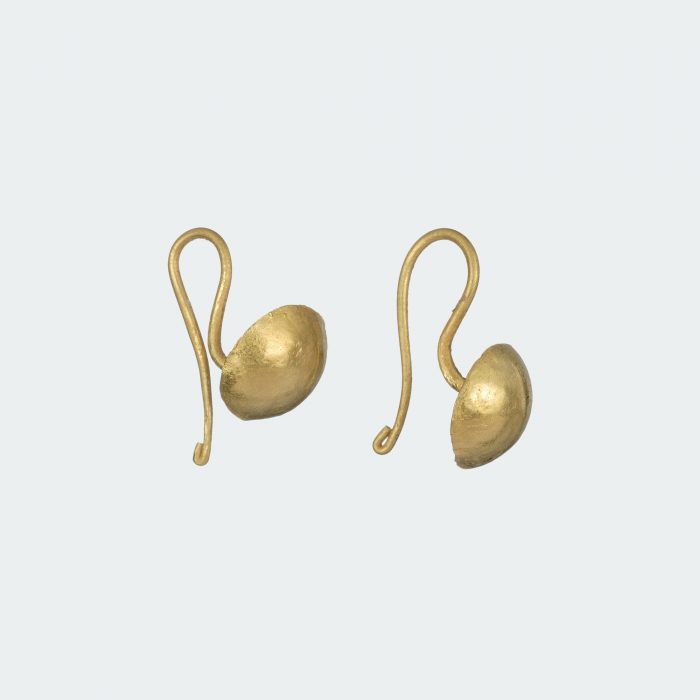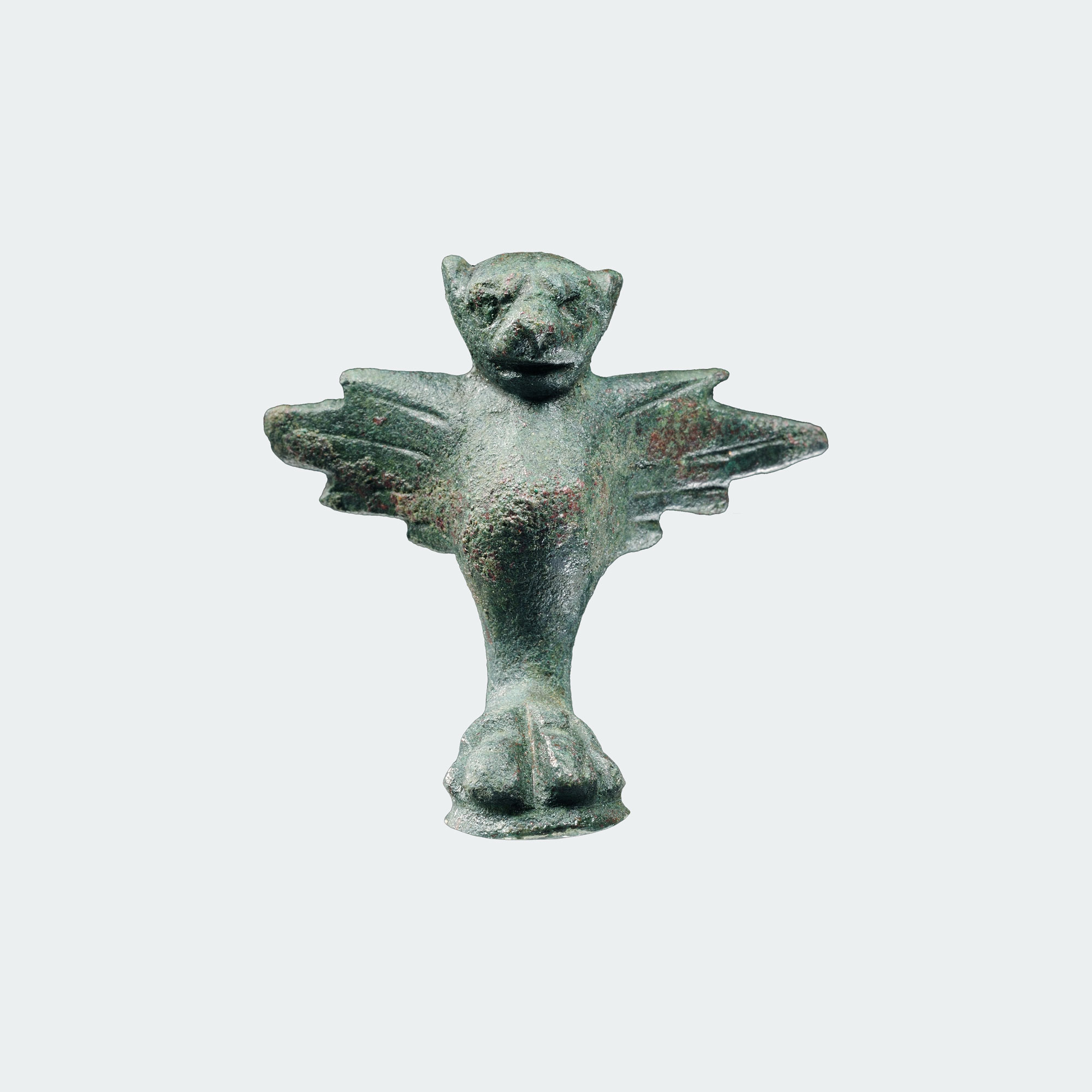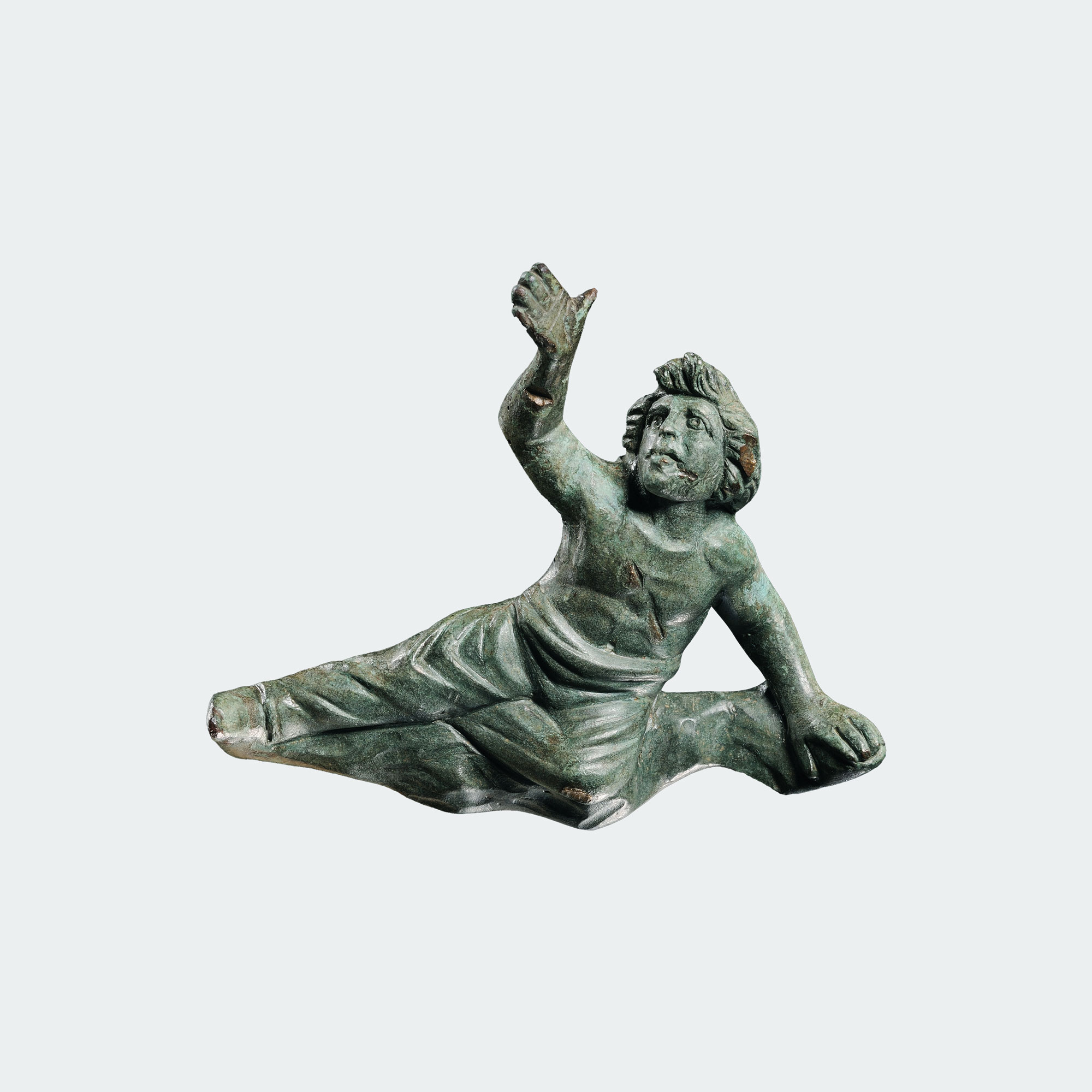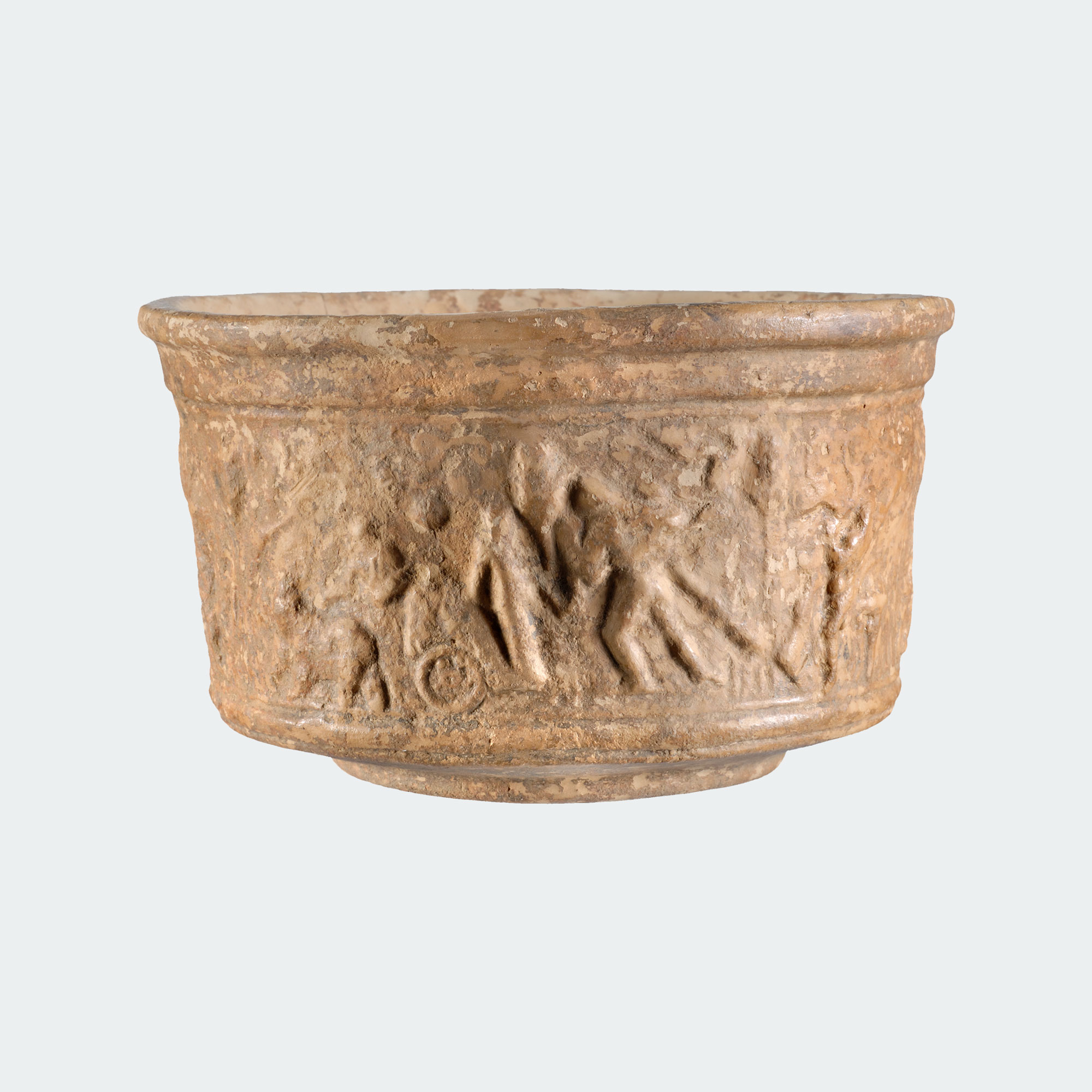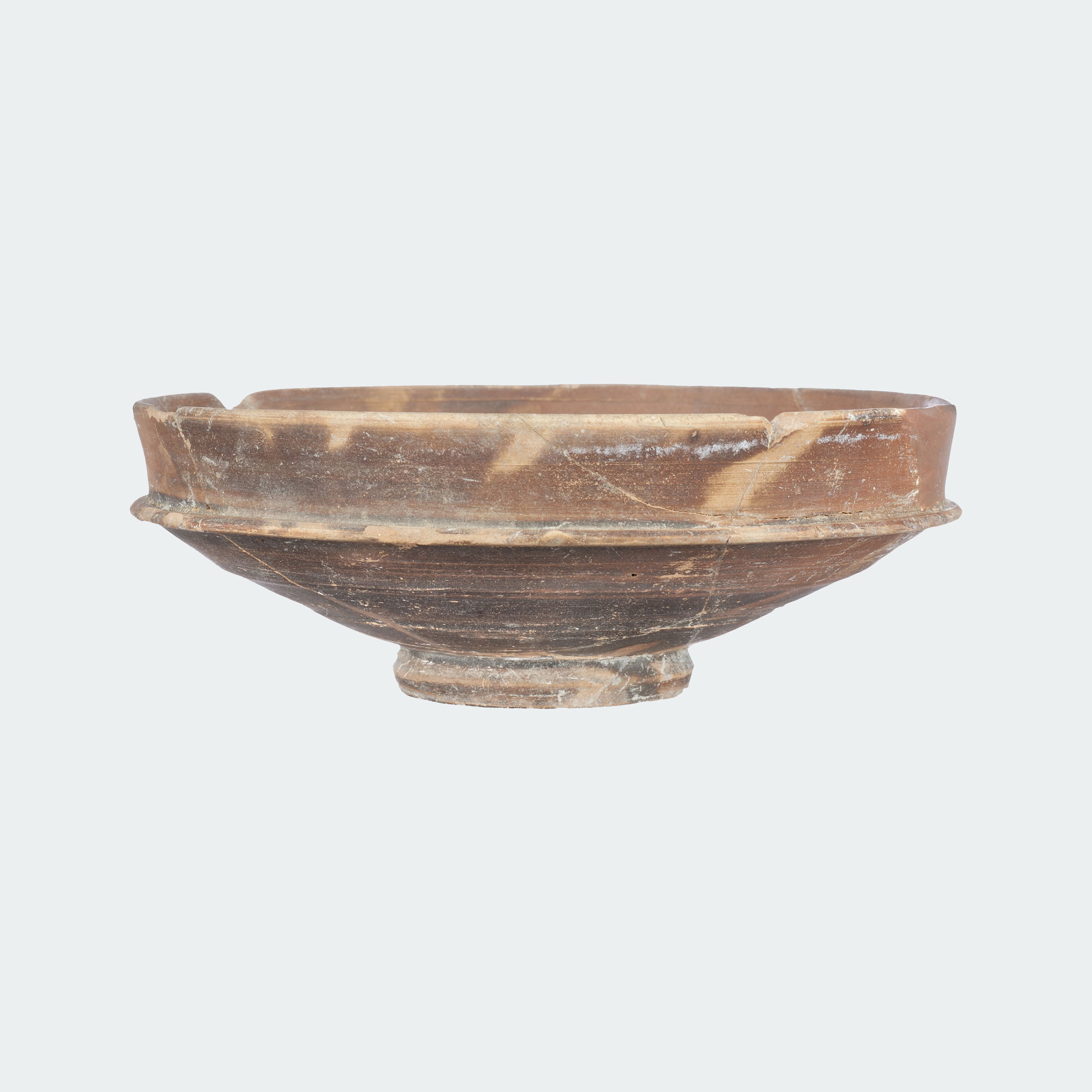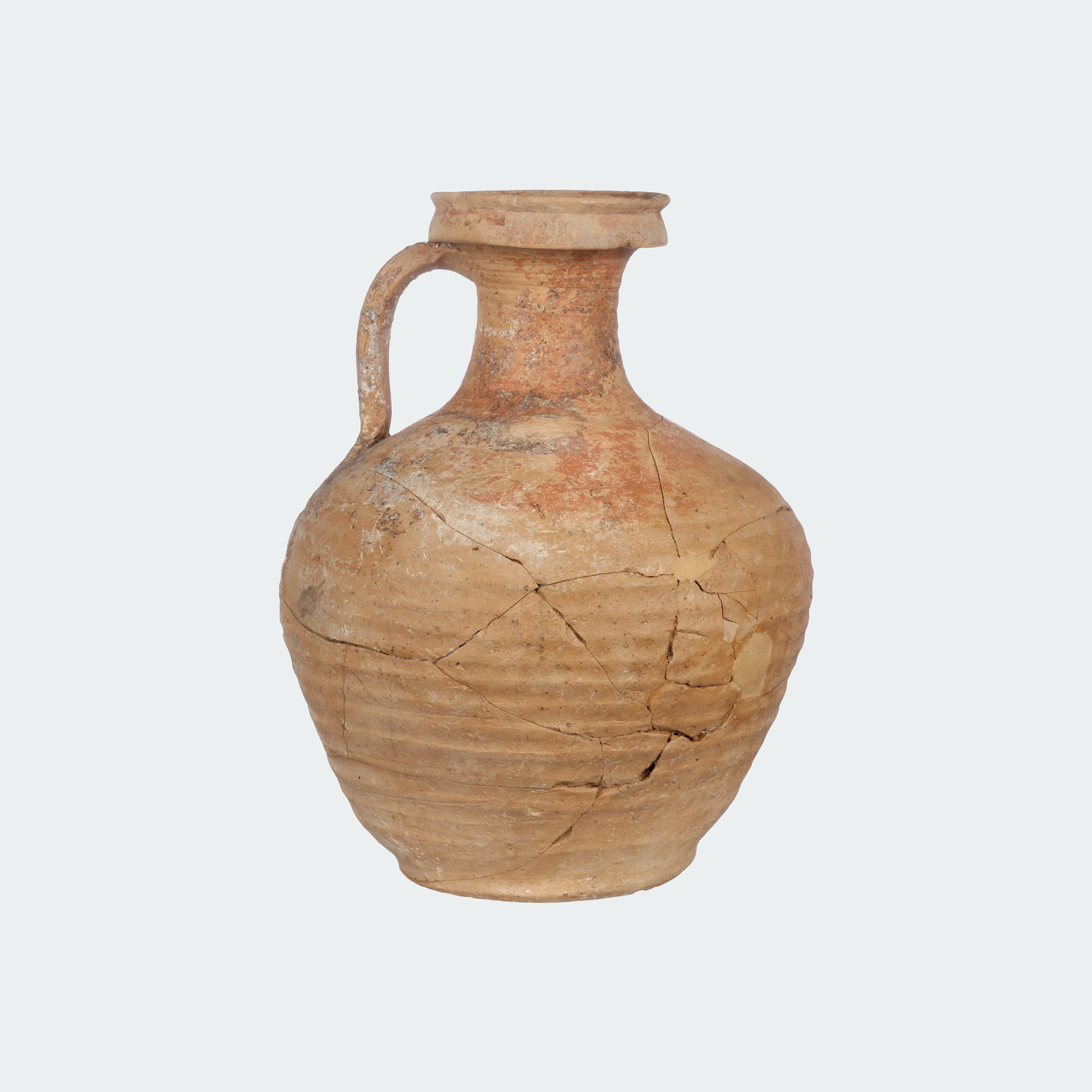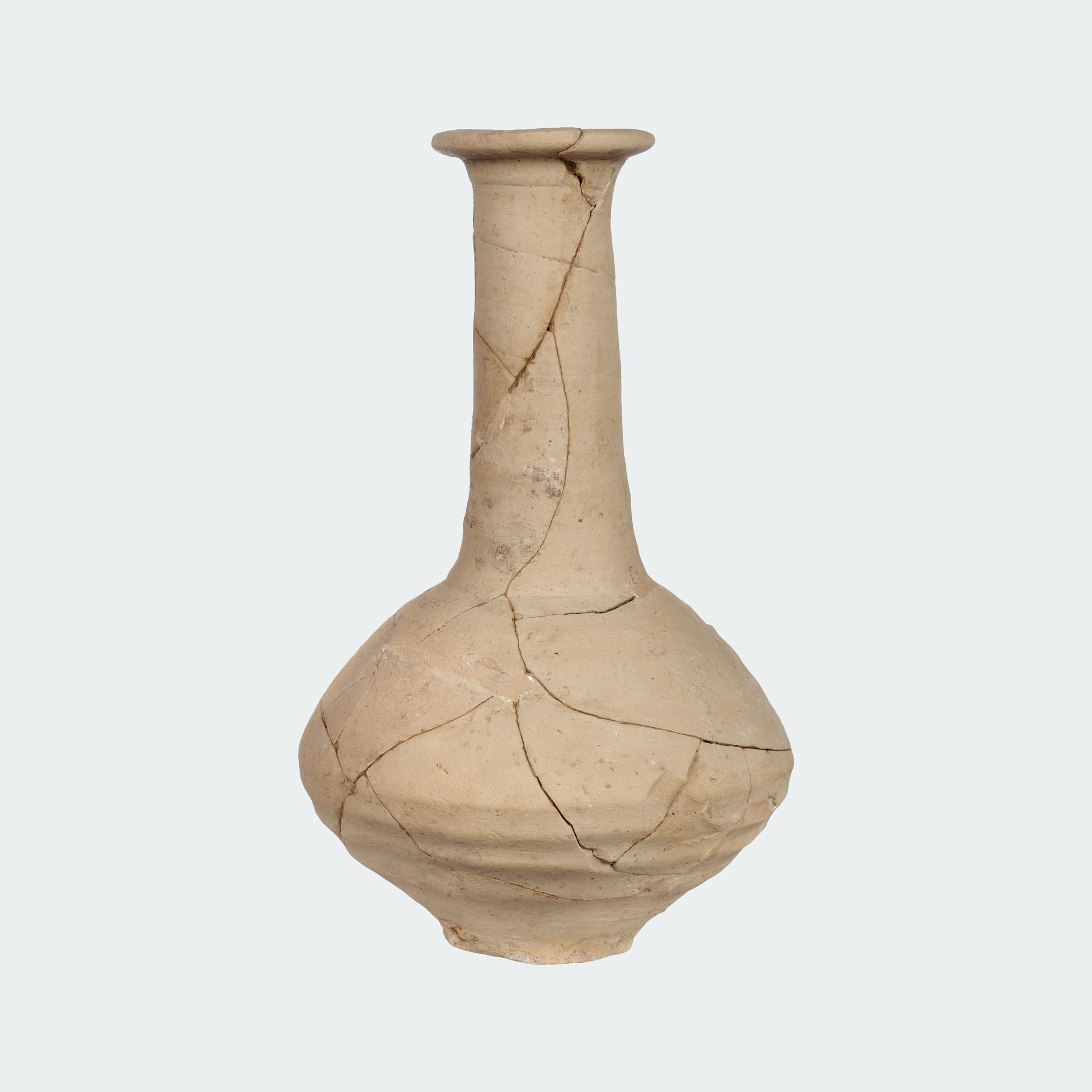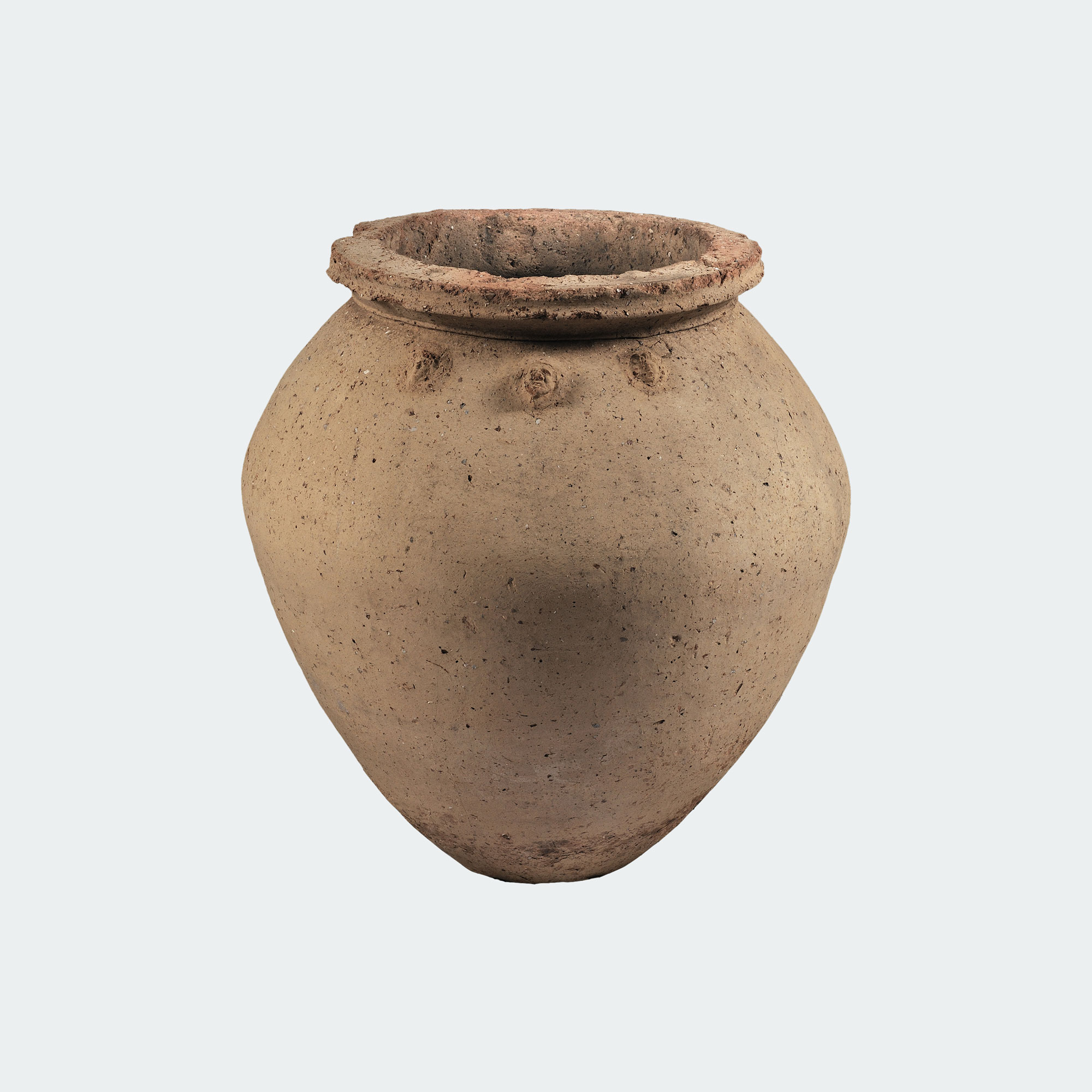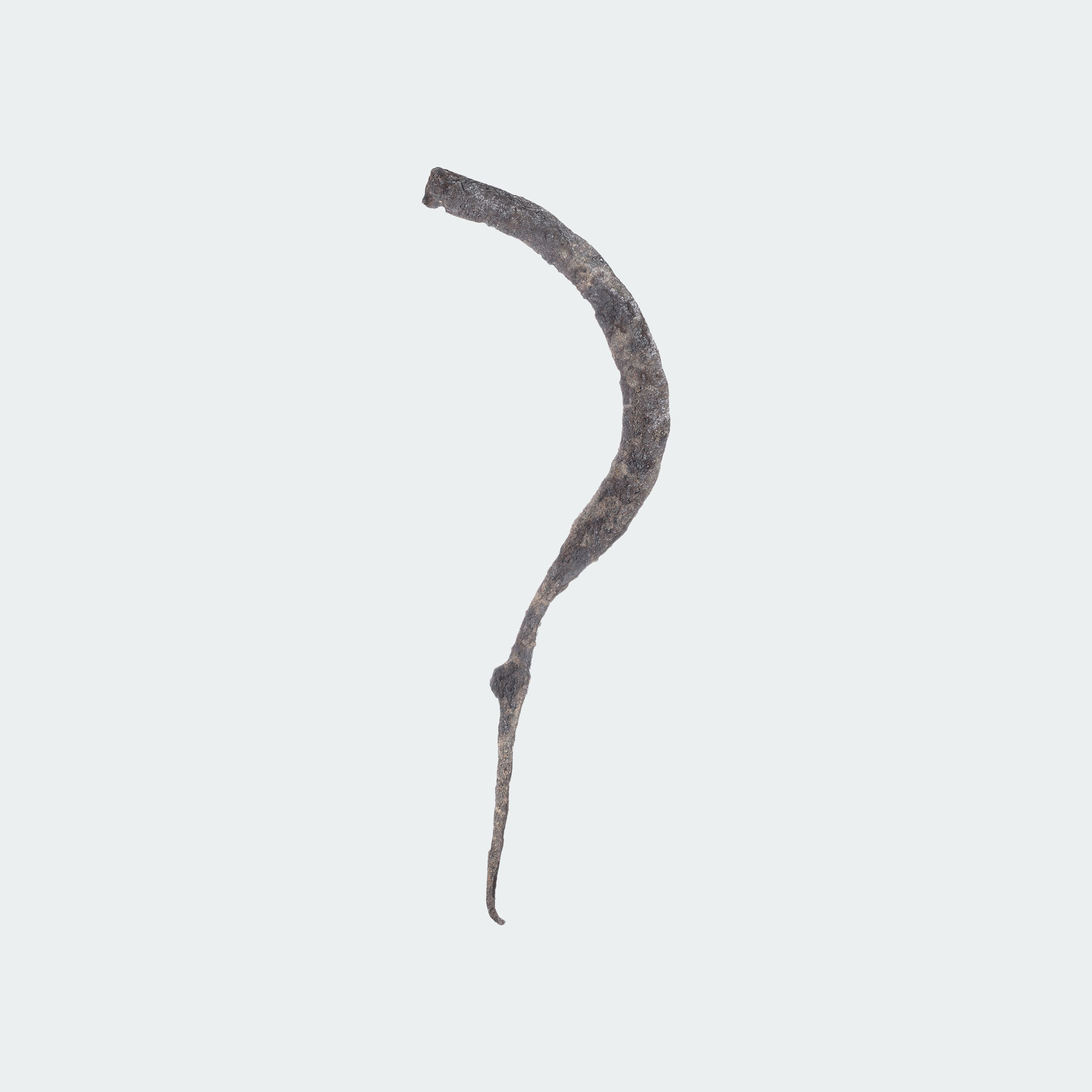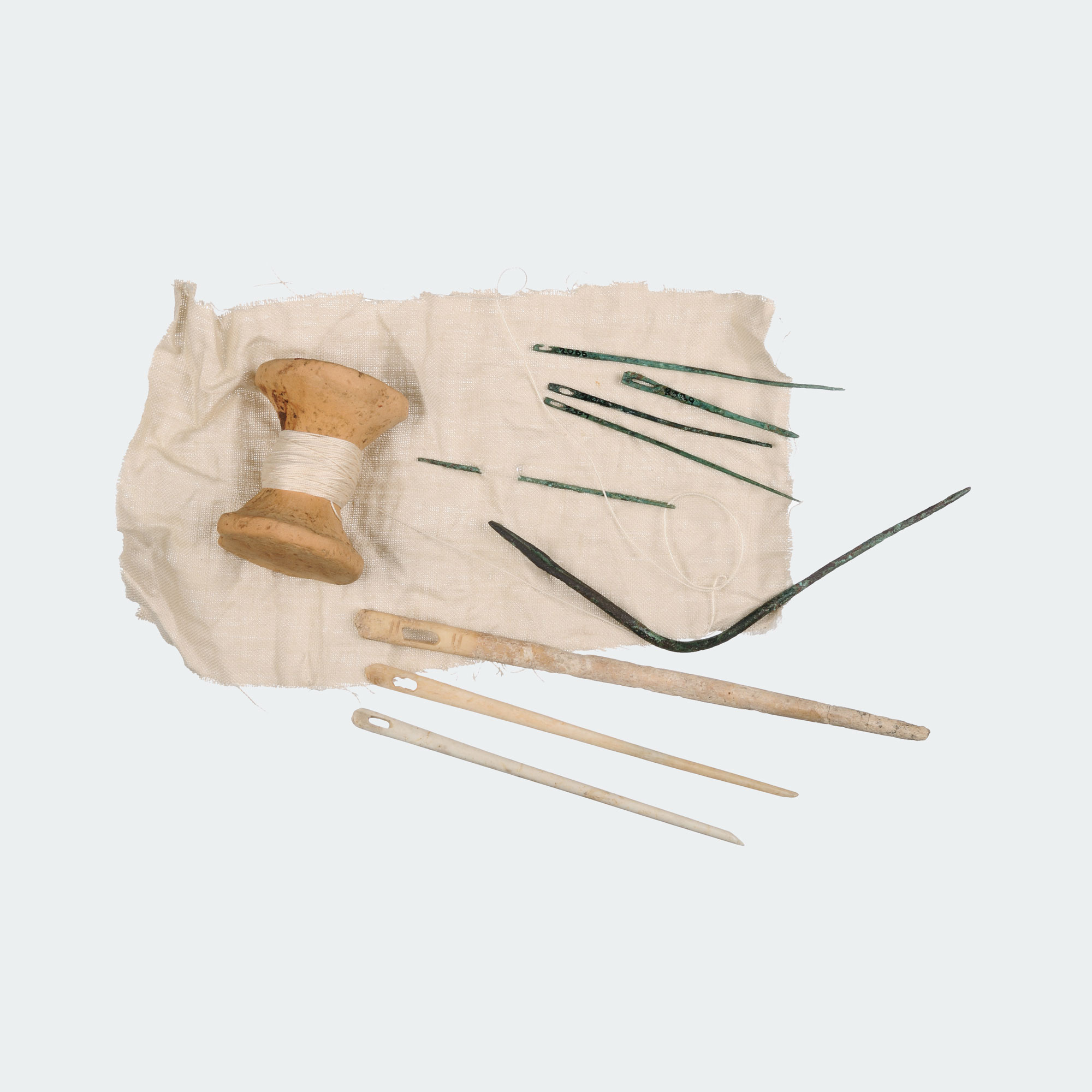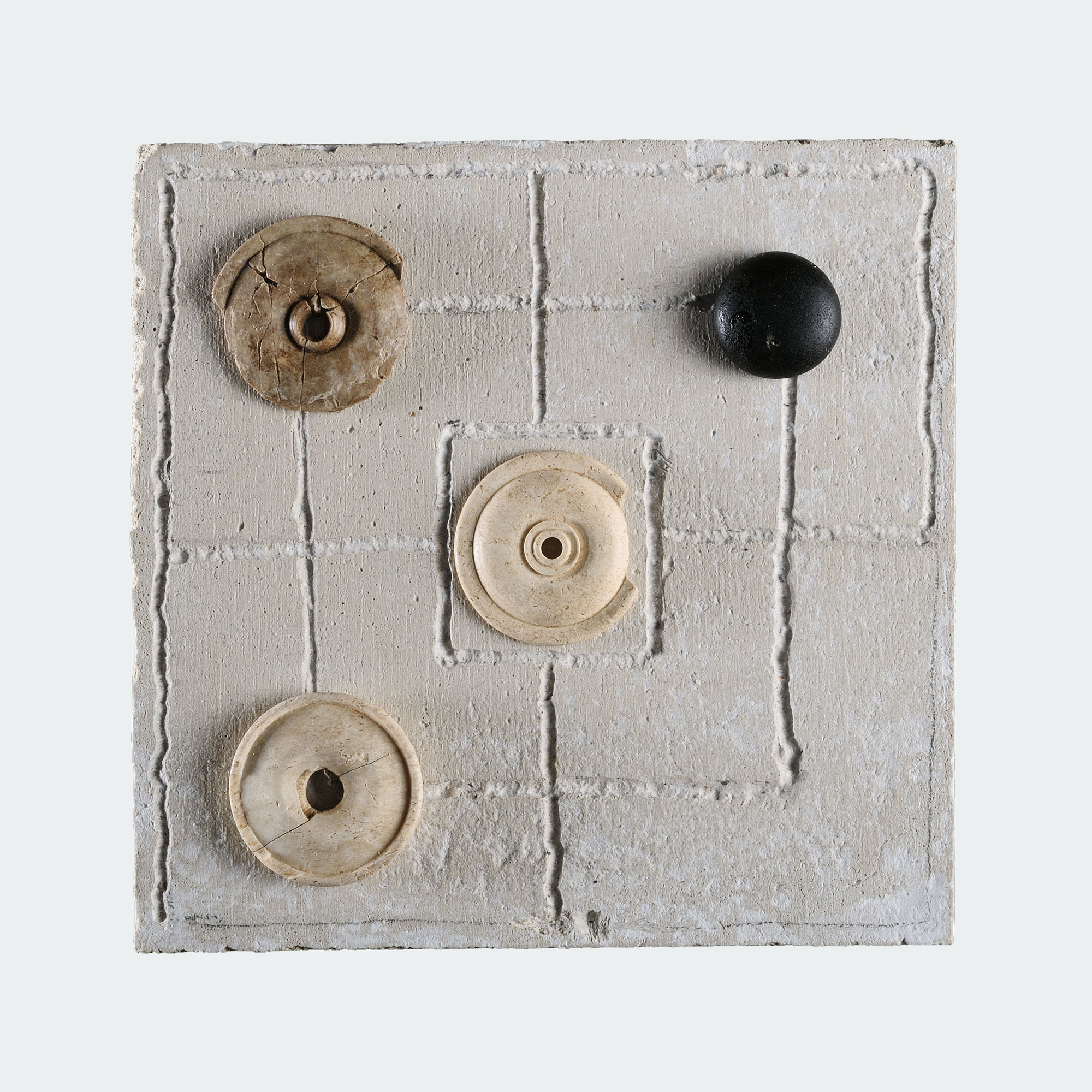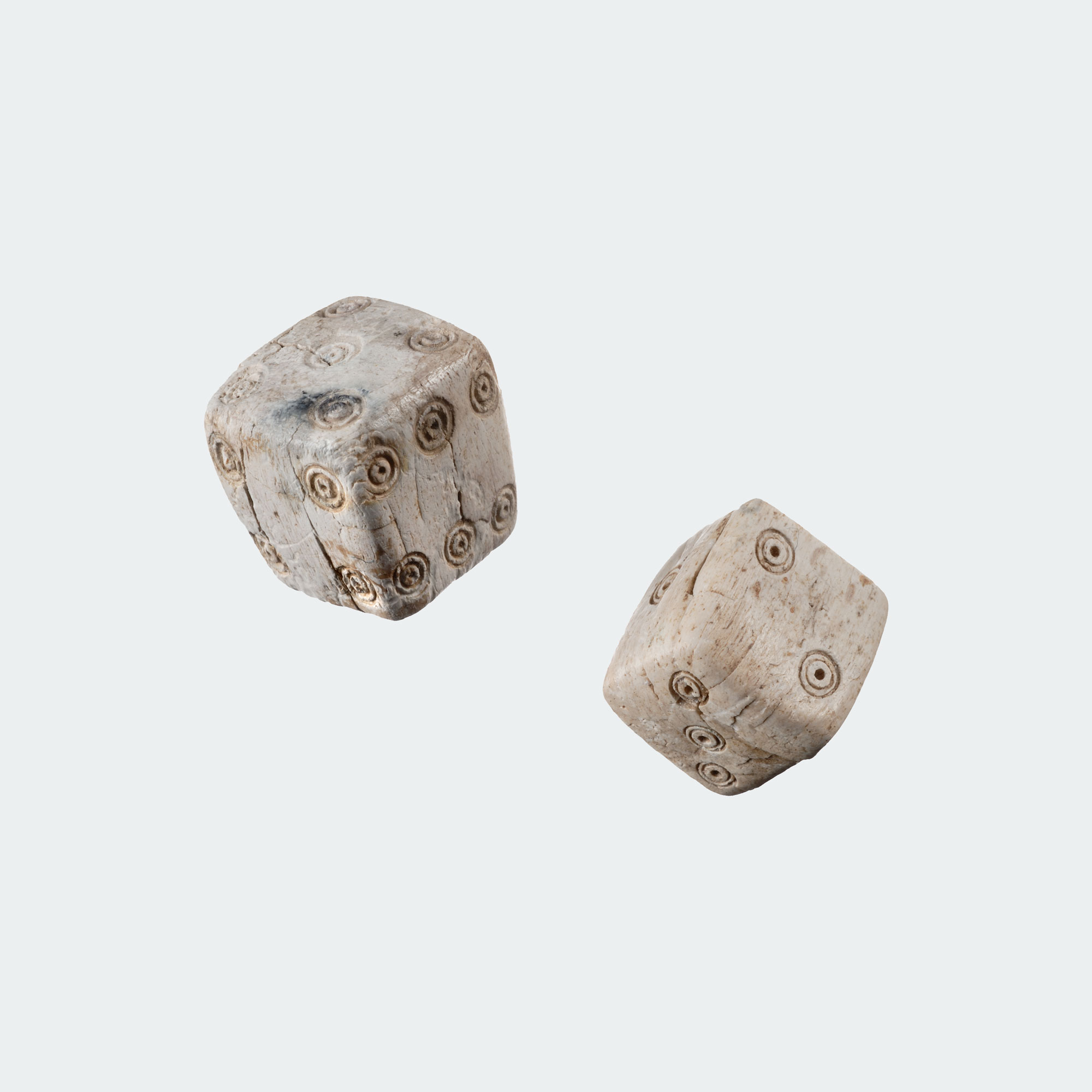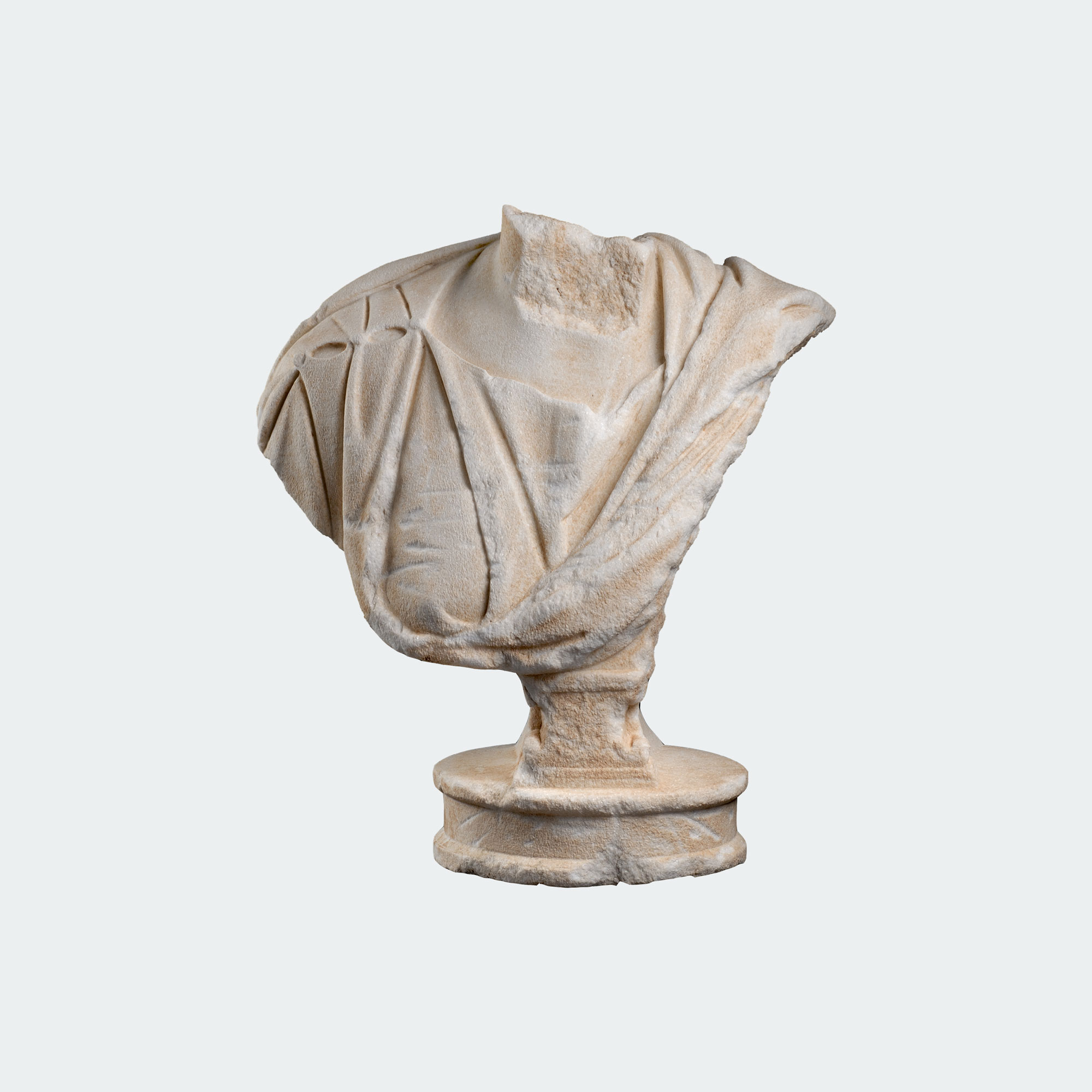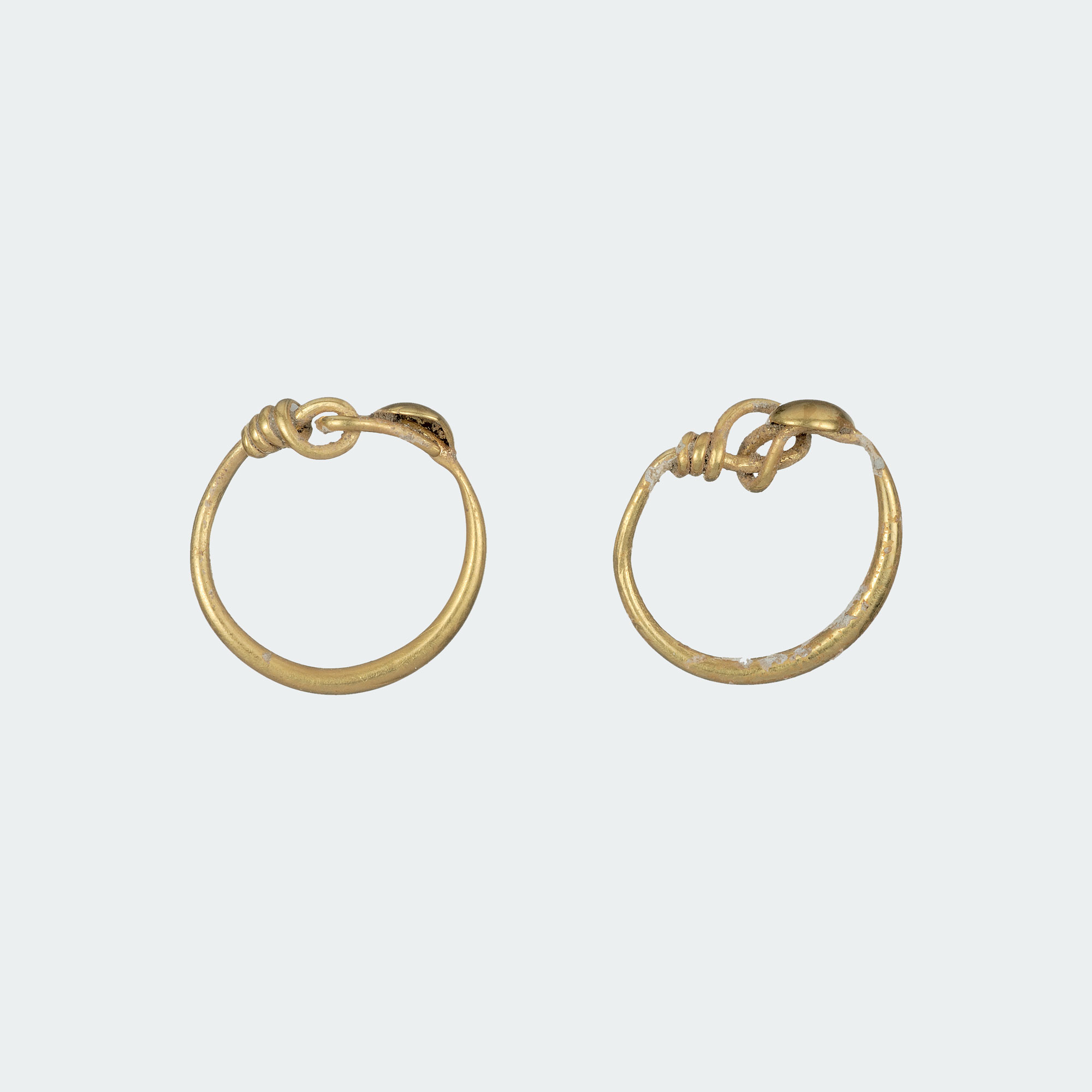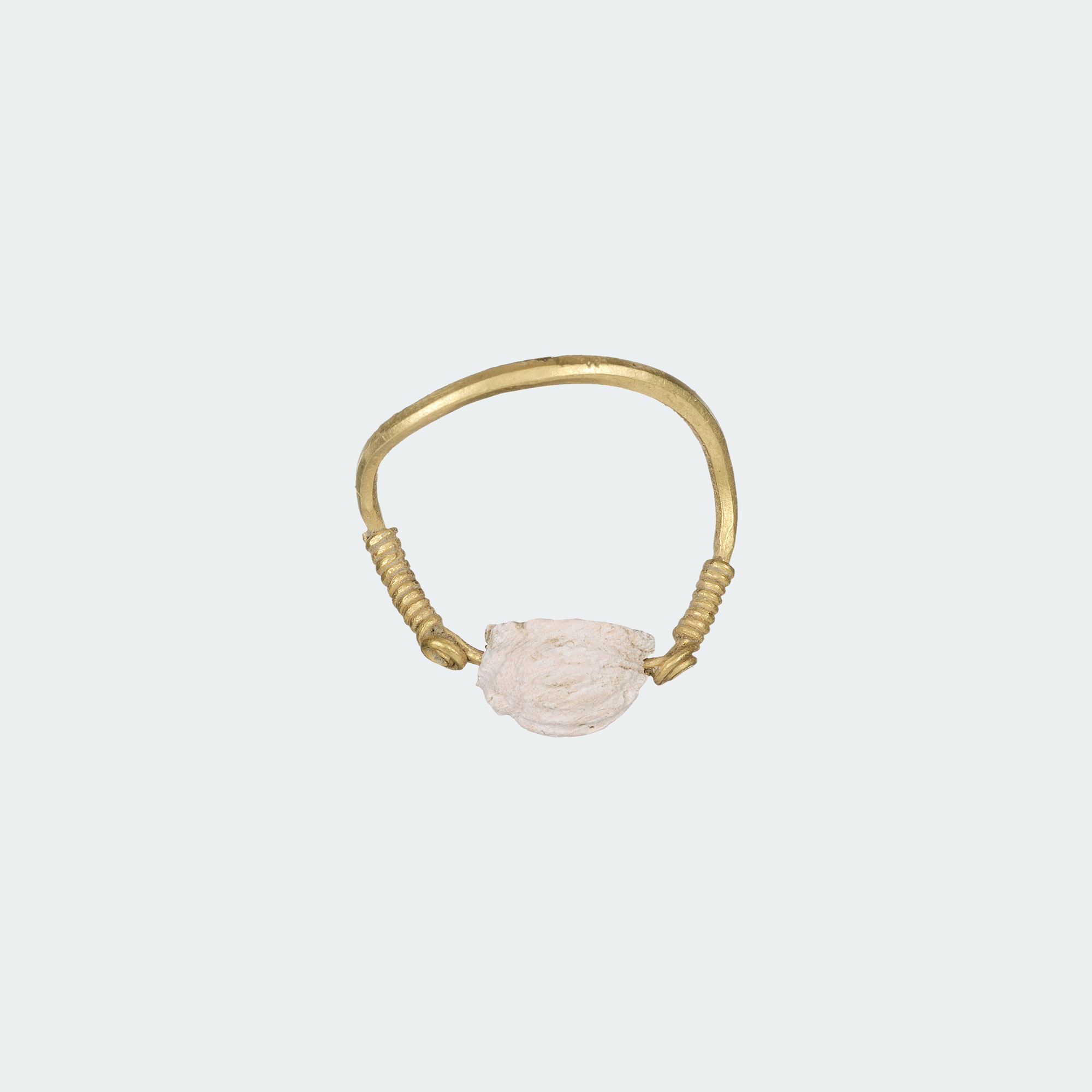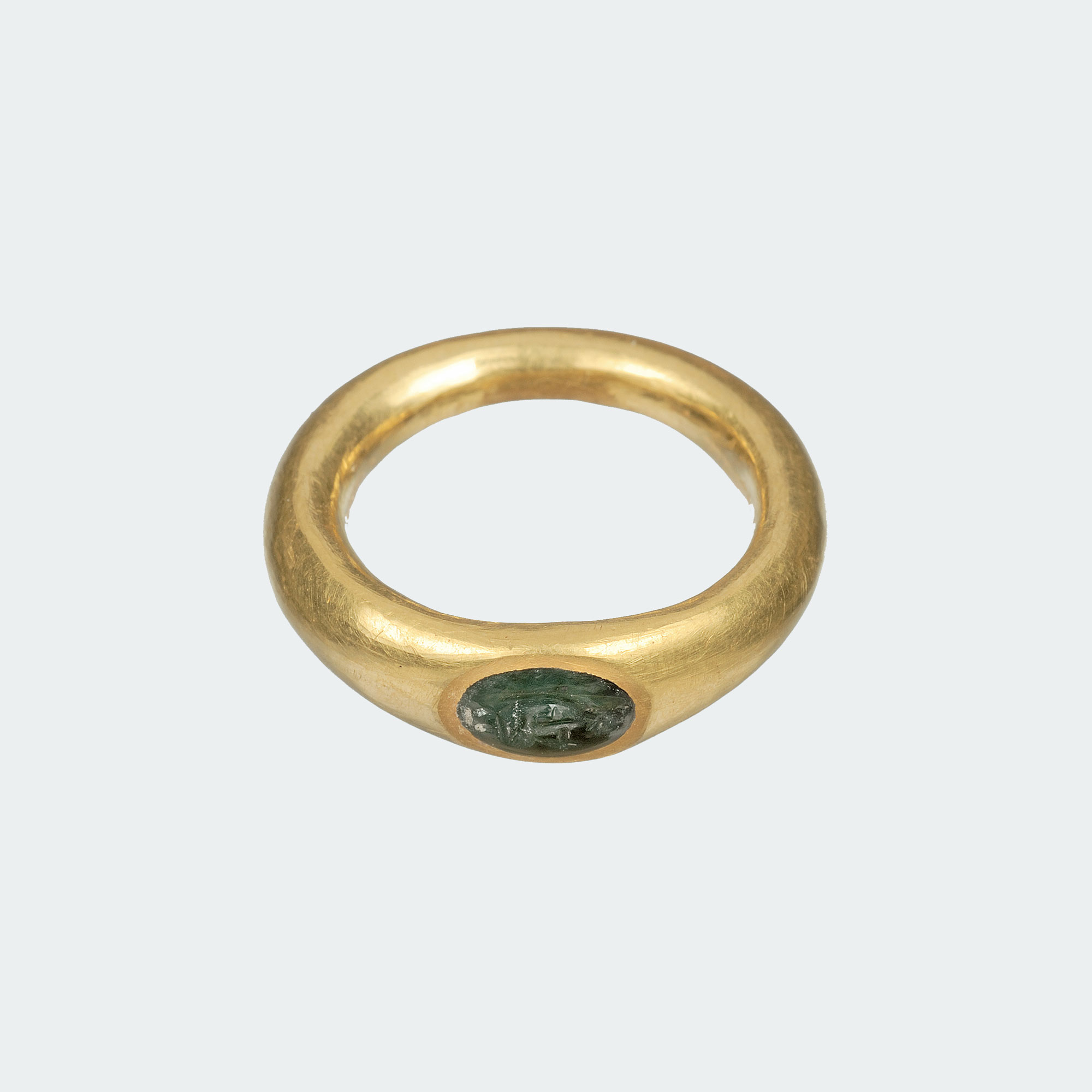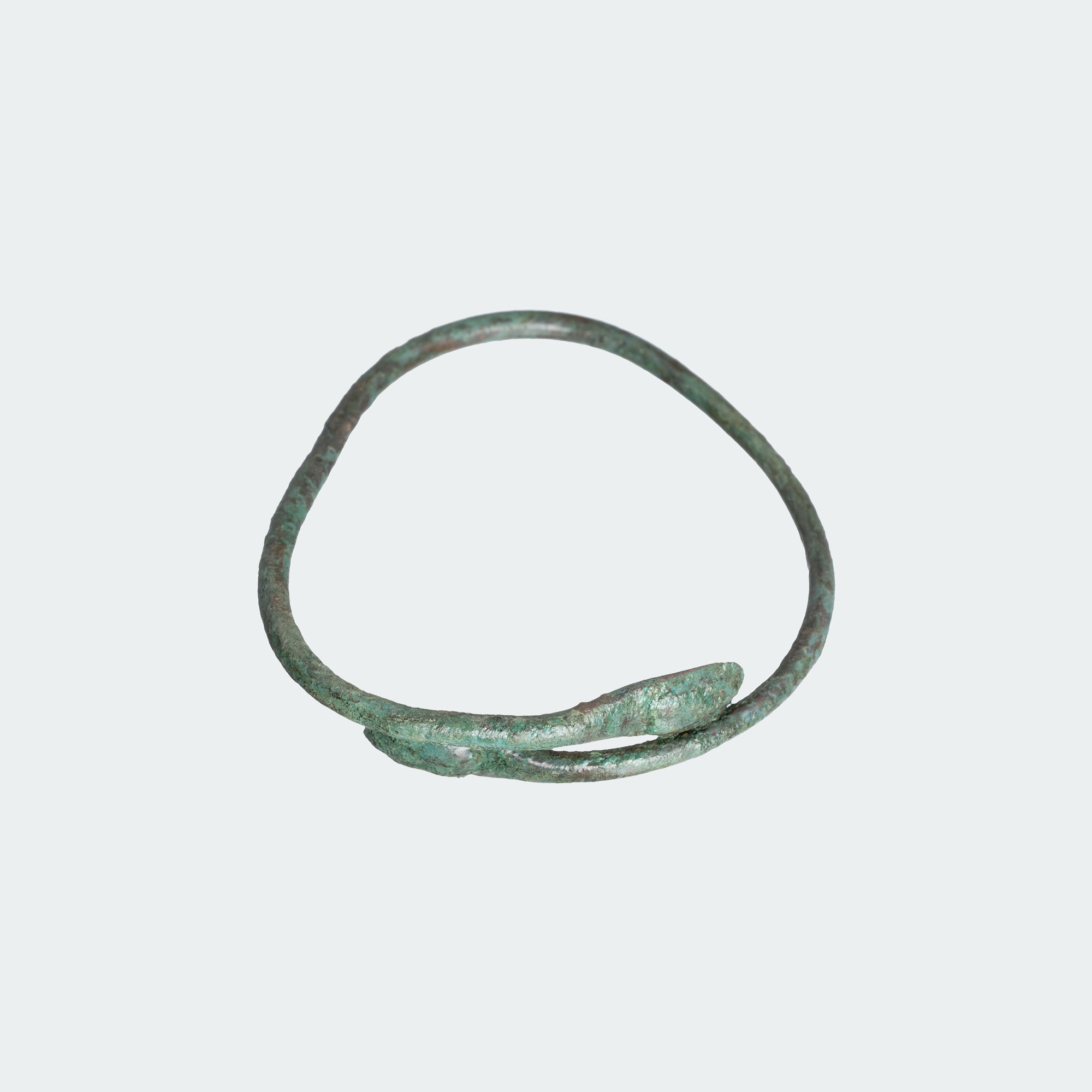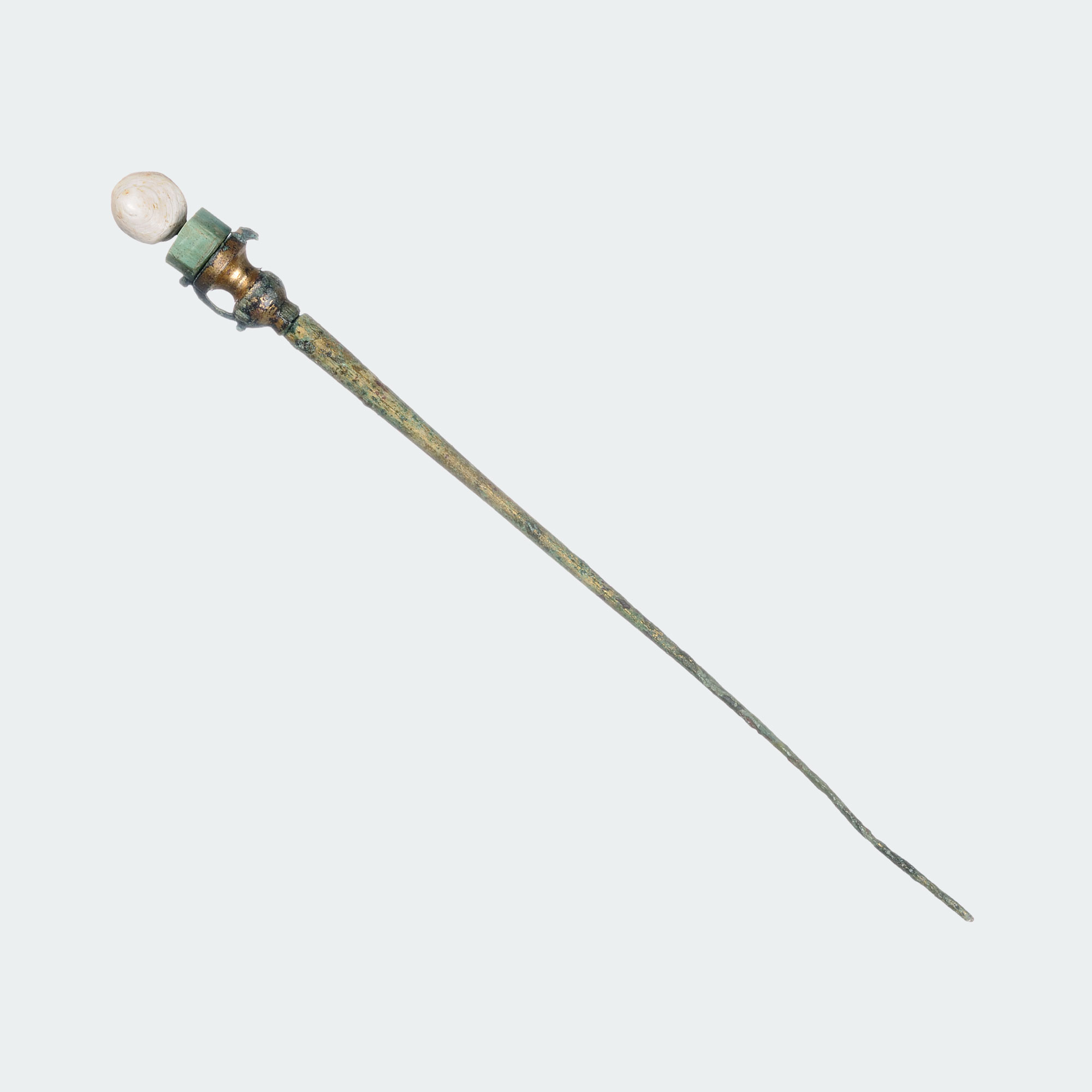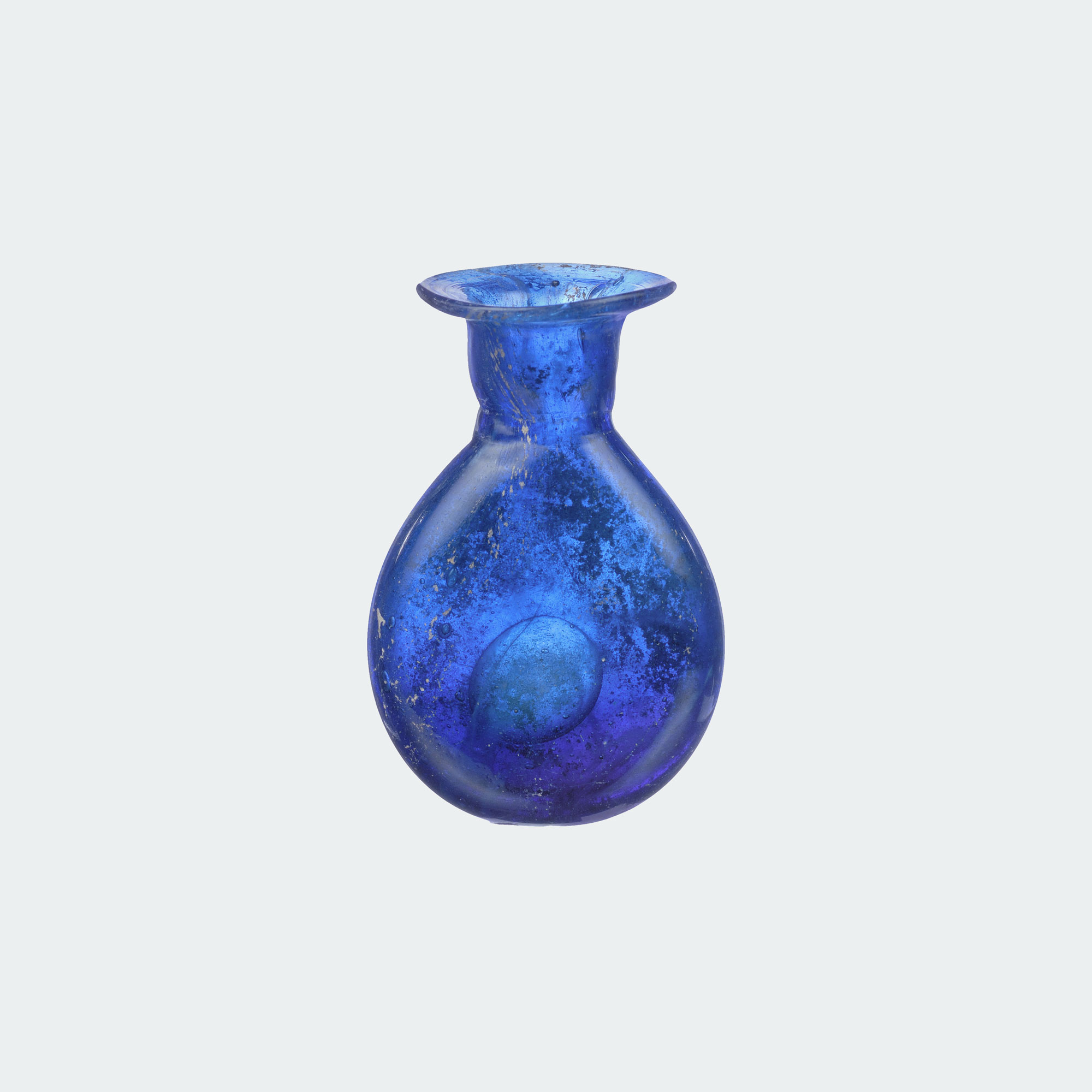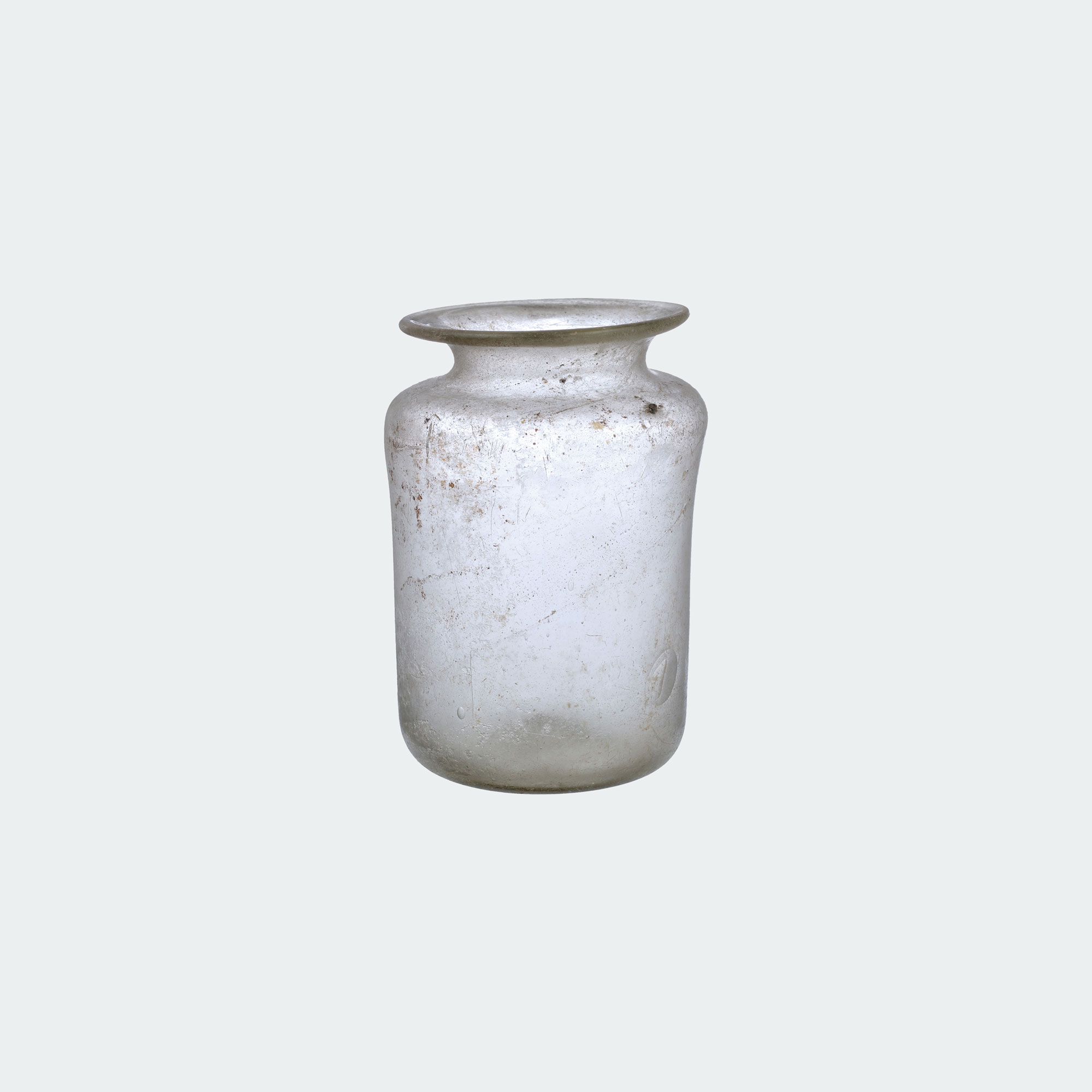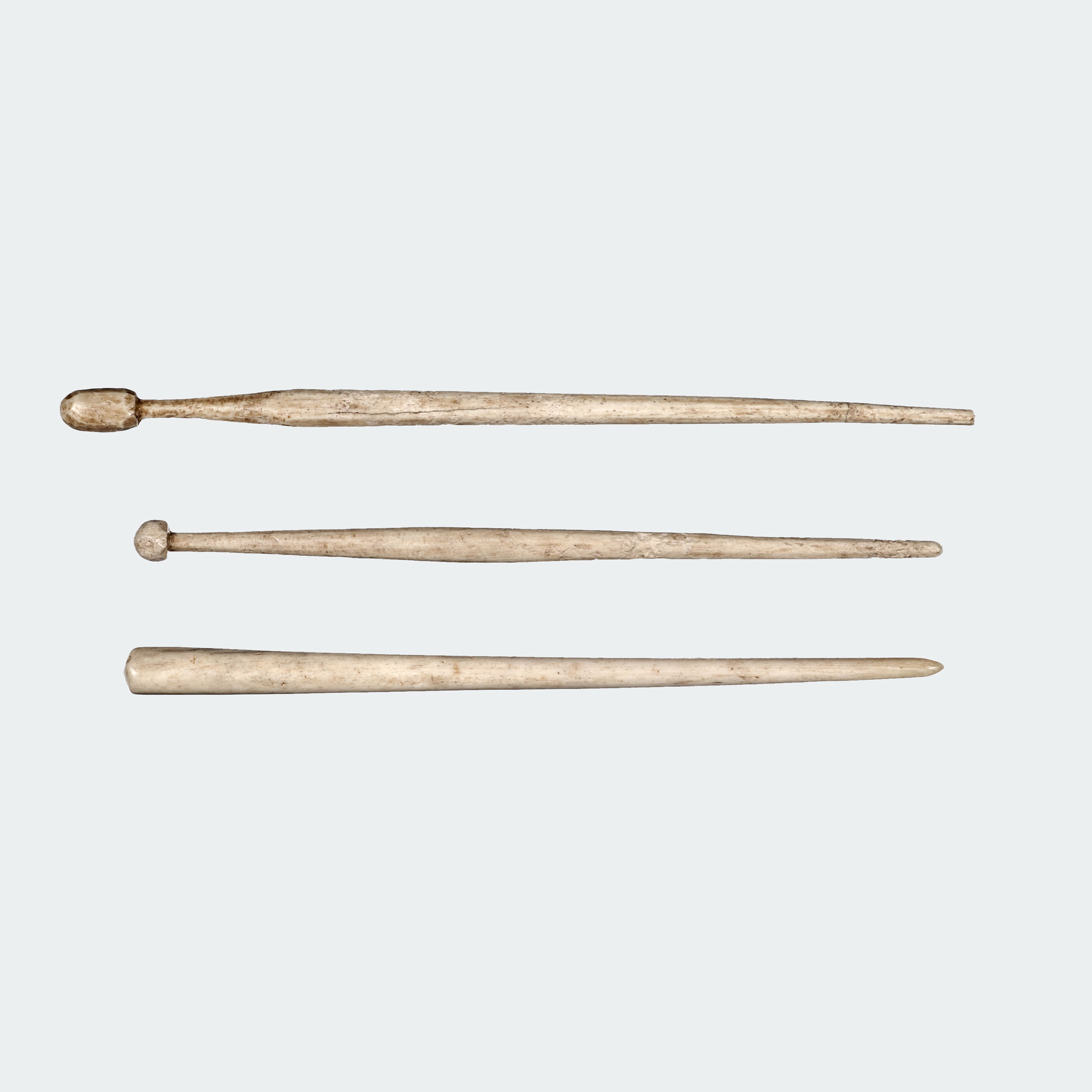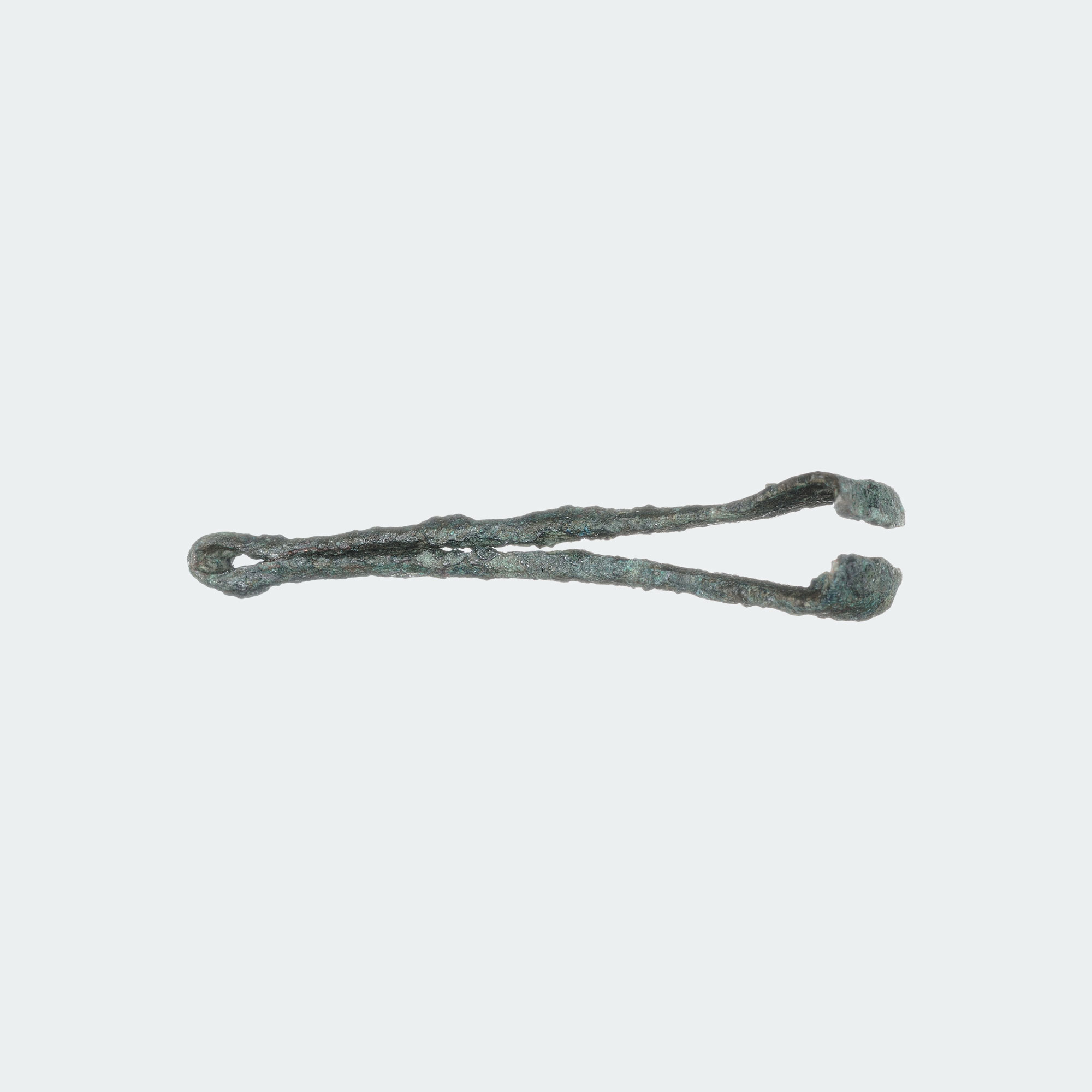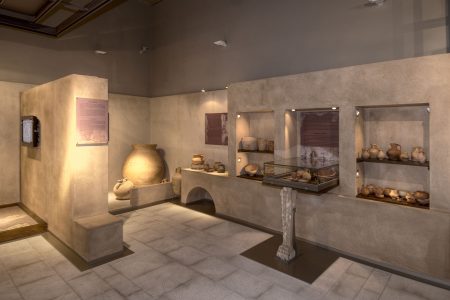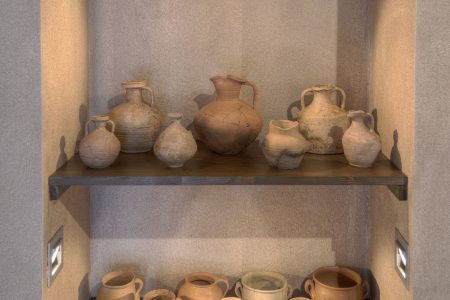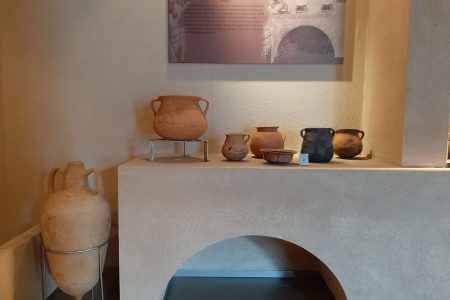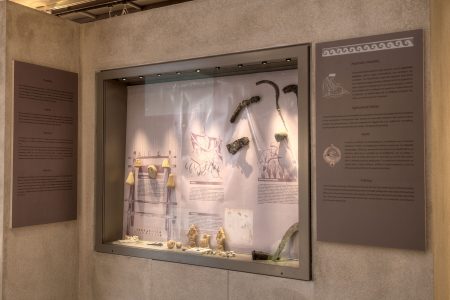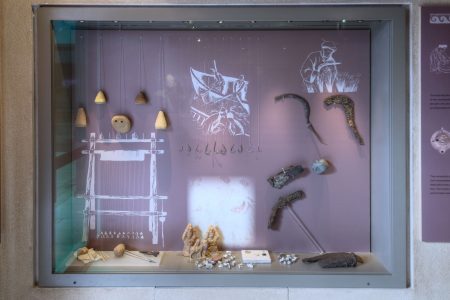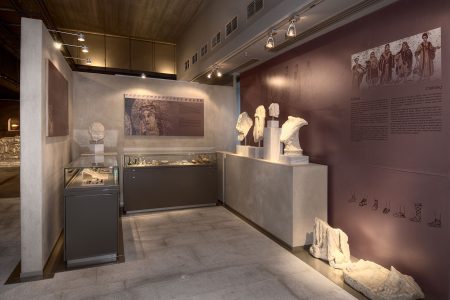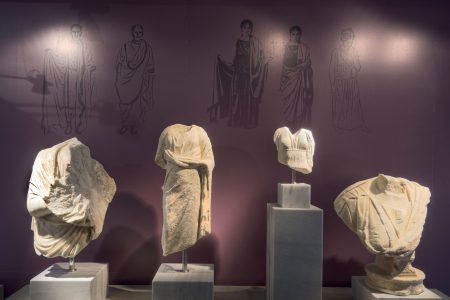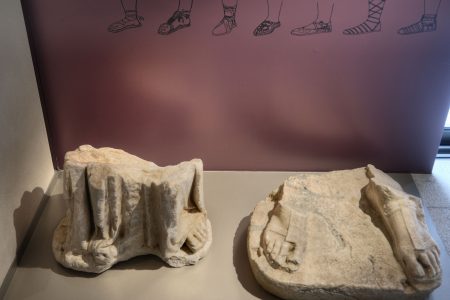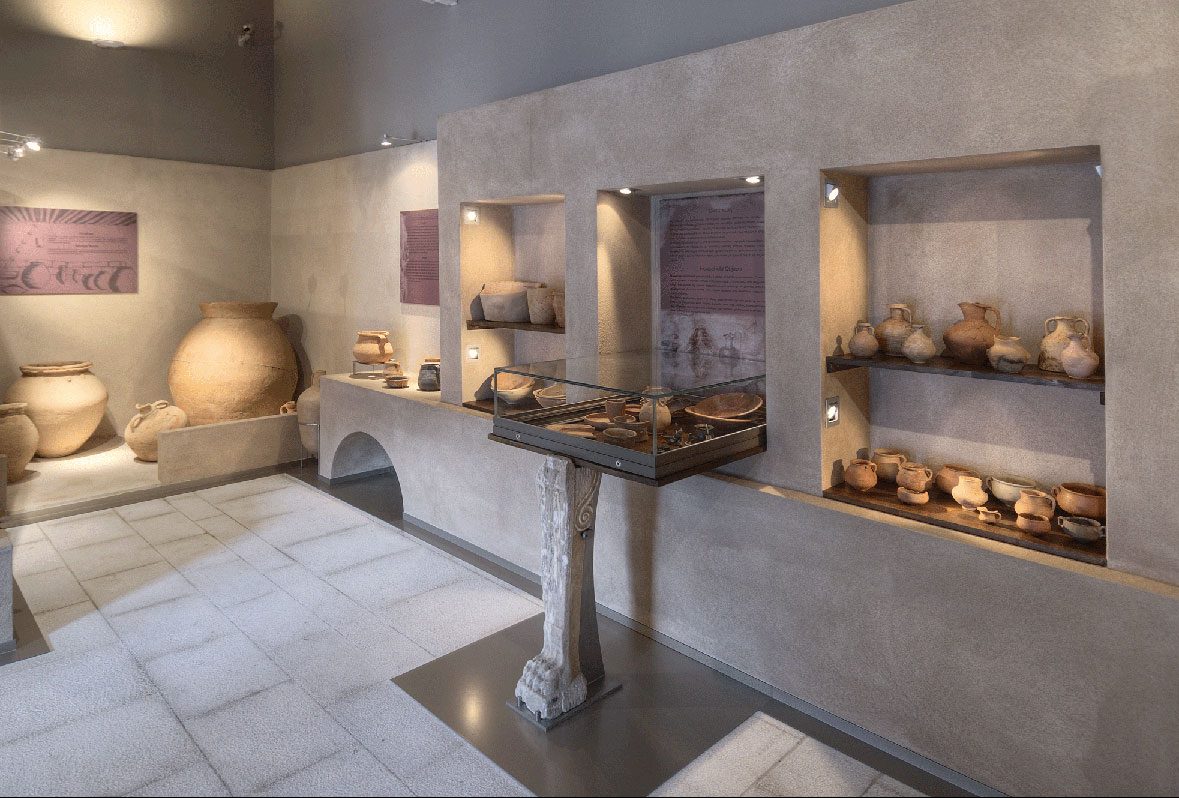
Private life
This section of the exhibition delves into the intimate aspects of daily life in Nicopolis, piecing together the lifestyle within homes and beyond through archaeological discoveries, historical records, and findings from similar regions.
Visitors will first gain insight into the architecture of opulent Roman residences, which, with minor adaptations, continued to be utilized during the early Christian period.
These homes featured reception areas, courtyards, spacious dining rooms often adorned with mosaic floors or wall paintings, bathrooms, storage spaces, and kitchens. The household equipment on display includes storage and cooking vessels, as well as an array of utensils for preparing, serving, and enjoying meals.
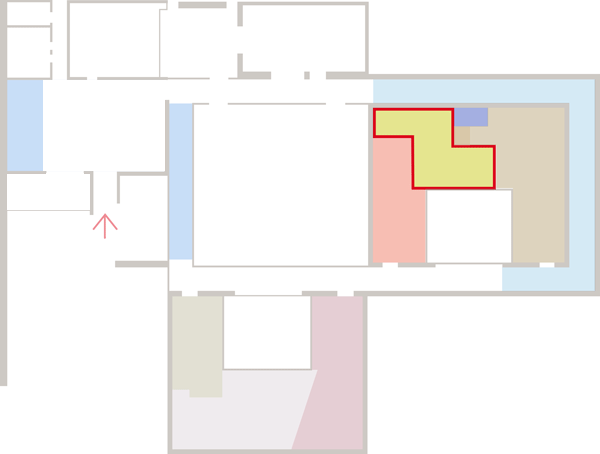

The exhibition then offers a glimpse into the various occupations of Nicopolis’ residents. Men primarily engaged in agricultural pursuits, animal husbandry, and fishing, using simple tools such as iron scythes, pickaxes, or copper hooks, similar to those still employed today.
Women were involved in activities like weaving, sewing, and embroidery, as evidenced by weaving weights, spindle fittings, and needles. Children enjoyed games like dice or anklets, along with board games like checkers.
Statues depicting both female and male figures provide insight into the evolution of clothing and footwear styles over time, while also highlighting the esthetics and fashion trends of each era.
Additionally, the display features items like metal or bone pins and buckles, which served to fasten clothing and enhance their fit.
The exhibition also showcases an assortment of jewelry, ranging from less extravagant pieces to more lavish adornments, along with various accessories used in the creation and storage of trinkets and perfumes. These artifacts reveal humanity’s timeless desire to enhance personal appearance and display the affluence of both men and women.
